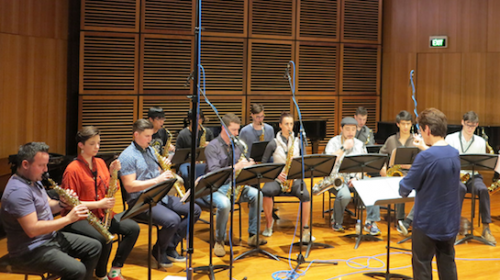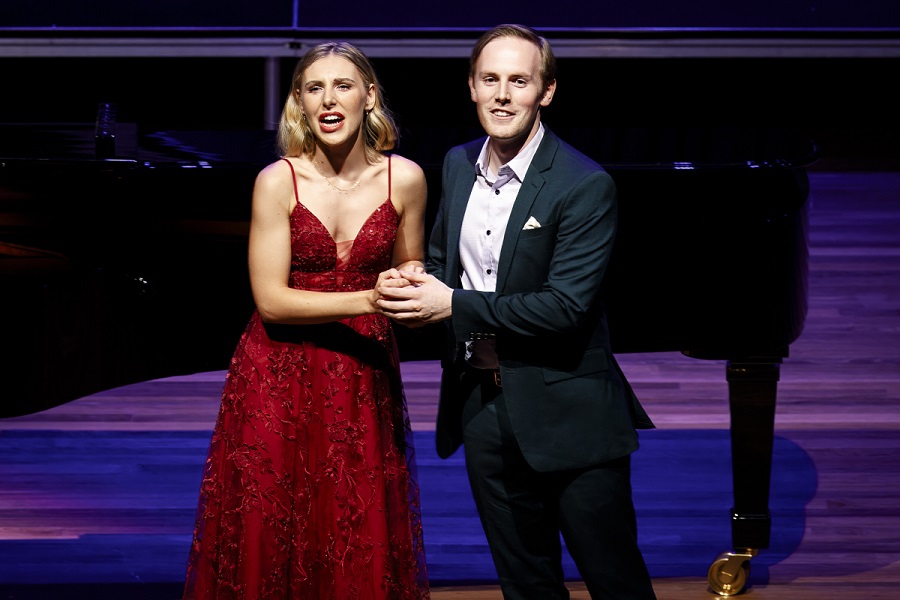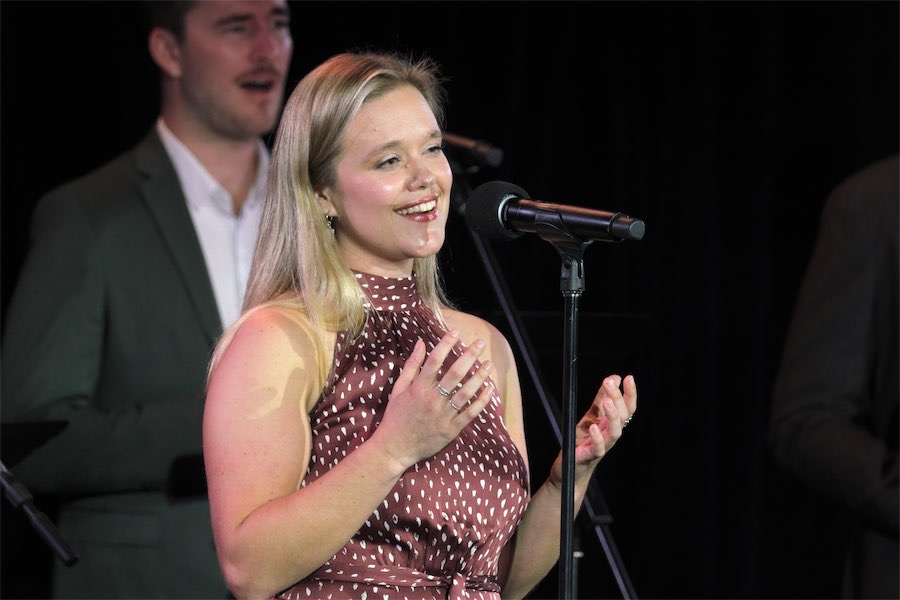
THE sound of a saxophone orchestra can have almost the same colour and dynamic as a full conventional orchestra while only containing a dozen or so players.
In this concert of all Australian composers and mostly female composers, the music ranged from the sounds of light at Uluru to a deep and meditative trance-like composition. The Sydney Conservatorium of Music Saxophone Orchestra was led by Dr Michael Duke.
Brenton Broadstock’s “Aurora Australis” began almost on the edge of silence, then several members of the orchestra grew their sound slowly until the composition built into a wall of music and then into a fast-pace combination of varying tunes all sounding at once.
The depth of the bass sax at great volume was felt in the gut as the music wafted across the audience in waves of discordant sound, as soloists came in and out through a deep oscillating pulse. Then, to emulate the beginning, but in reverse, the arrangement died away into a diffused portrait of ambient music; it was quite an experience.
Cast in three movements, Matthew Orlovich’s “Concertino for Saxophone and Saxophone Orchestra” had Dr Michael Duke as soloist, conducted by Dr Jay Byrnes. This modern, tonal work flowed between contrasting moods and it did it with vigour through whirling melodies on solo sax. The bright orchestral colours of this piece came through some inspired playing from everyone and the well-written music; it was a joyous piece.
“First Light at Uluru” by Katia Beaugeais uses effects such as wind sounds blown through the saxophones and multiphonics, but this is also a piece of searing beauty that imagines the first light of the sun rising over Uluru and then setting over that rock. This breathtaking music glowed with warmth and the sound of wildlife.
The Elena Kats-Chernin work “From Anna Magdalena’s Notebook” was arranged from string quartet to saxophone quartet. The six short movements all had that distinctive Kats-Chernin sound quality. They were fast, melodious, sensitive and quirky and the quartet made them sound fresh and alive.
Gabriella Vici’s “Prelude, Idyll and Fugue” is a dynamic work of movement, drive and volume. Sounding like a big band in parts and then like a small ensemble, this music flutters, floats and uses the expressive colours of the saxophone to create a full orchestral sound. The blend of tone colours the players produced, along with the rhythmical and technically tricky writing made this a standout piece. This is a mature composition from the young Sydney composer.
Canberra composer Natalie Williams had a world premiere with her work “Arcana”. Williams broke the orchestra up into four sections and had them placed around the audience. This eclectic work used that spatial effect to create a unique sound design, and the players swapped positions between movements. It was a brooding work for most of the three sections with a strong blending of tone colours creating a saturated sound. The final movement was like a palette of ambient music that reminded me of the great electronic composer Klaus Schulze.
This music created one of the most interesting and enjoyable concerts this reviewer has seen in Canberra in 2018.
Who can be trusted?
In a world of spin and confusion, there’s never been a more important time to support independent journalism in Canberra.
If you trust our work online and want to enforce the power of independent voices, I invite you to make a small contribution.
Every dollar of support is invested back into our journalism to help keep citynews.com.au strong and free.
Thank you,
Ian Meikle, editor




Leave a Reply